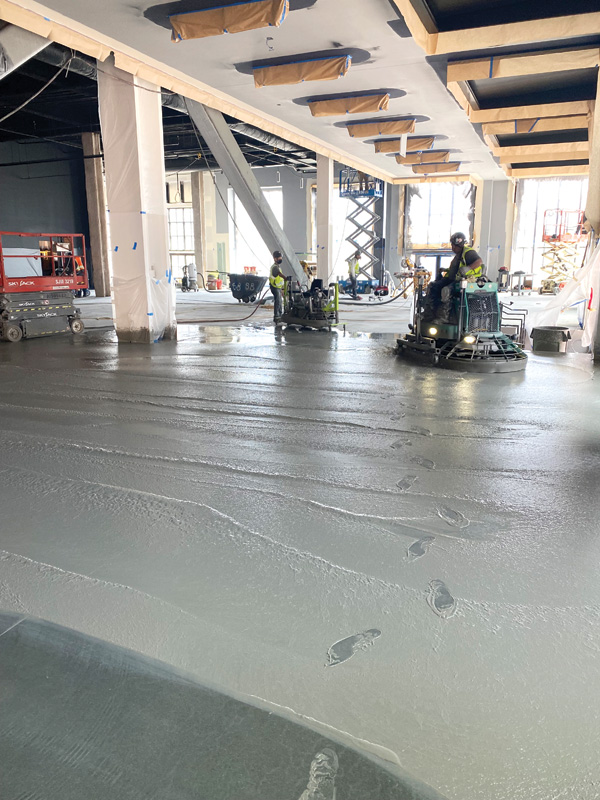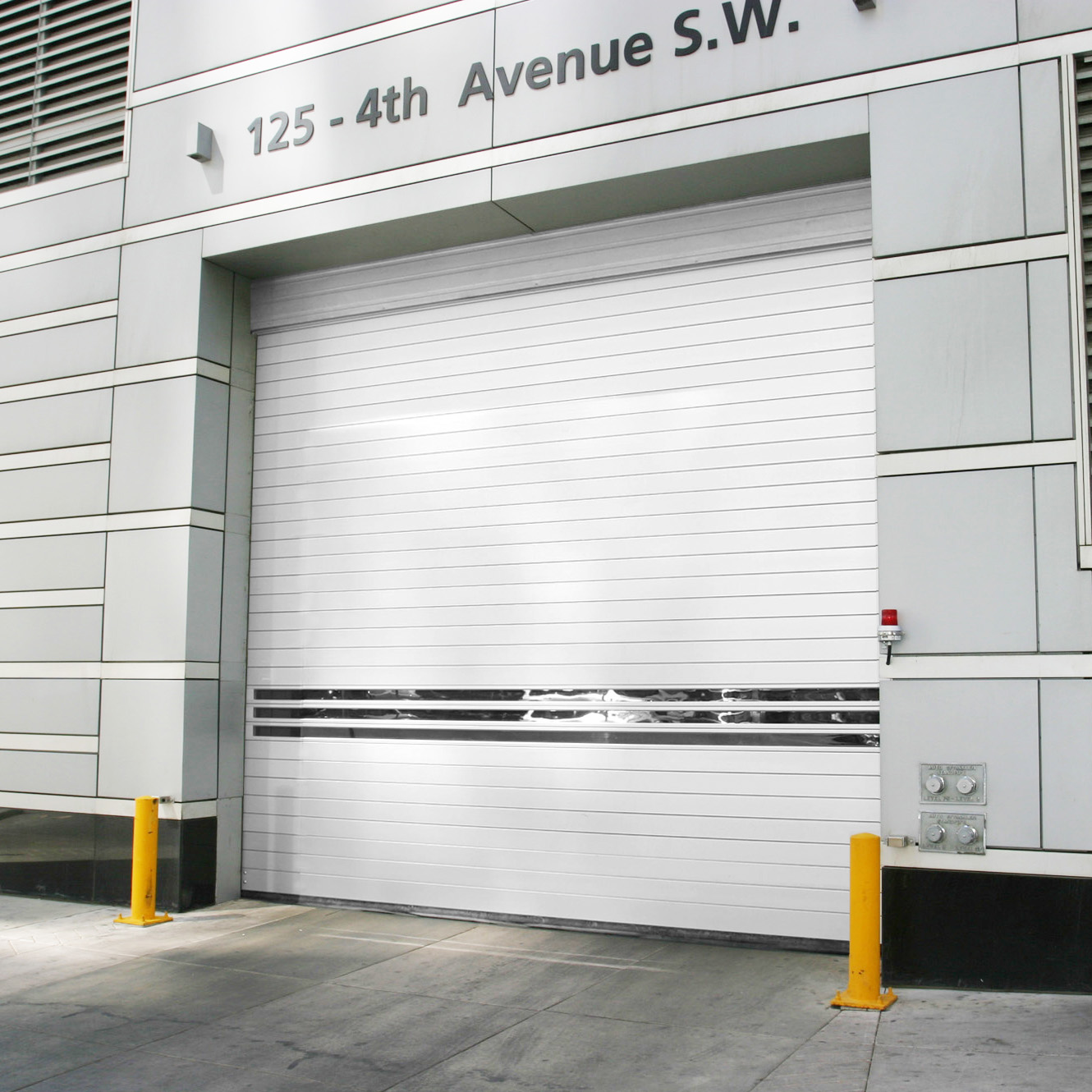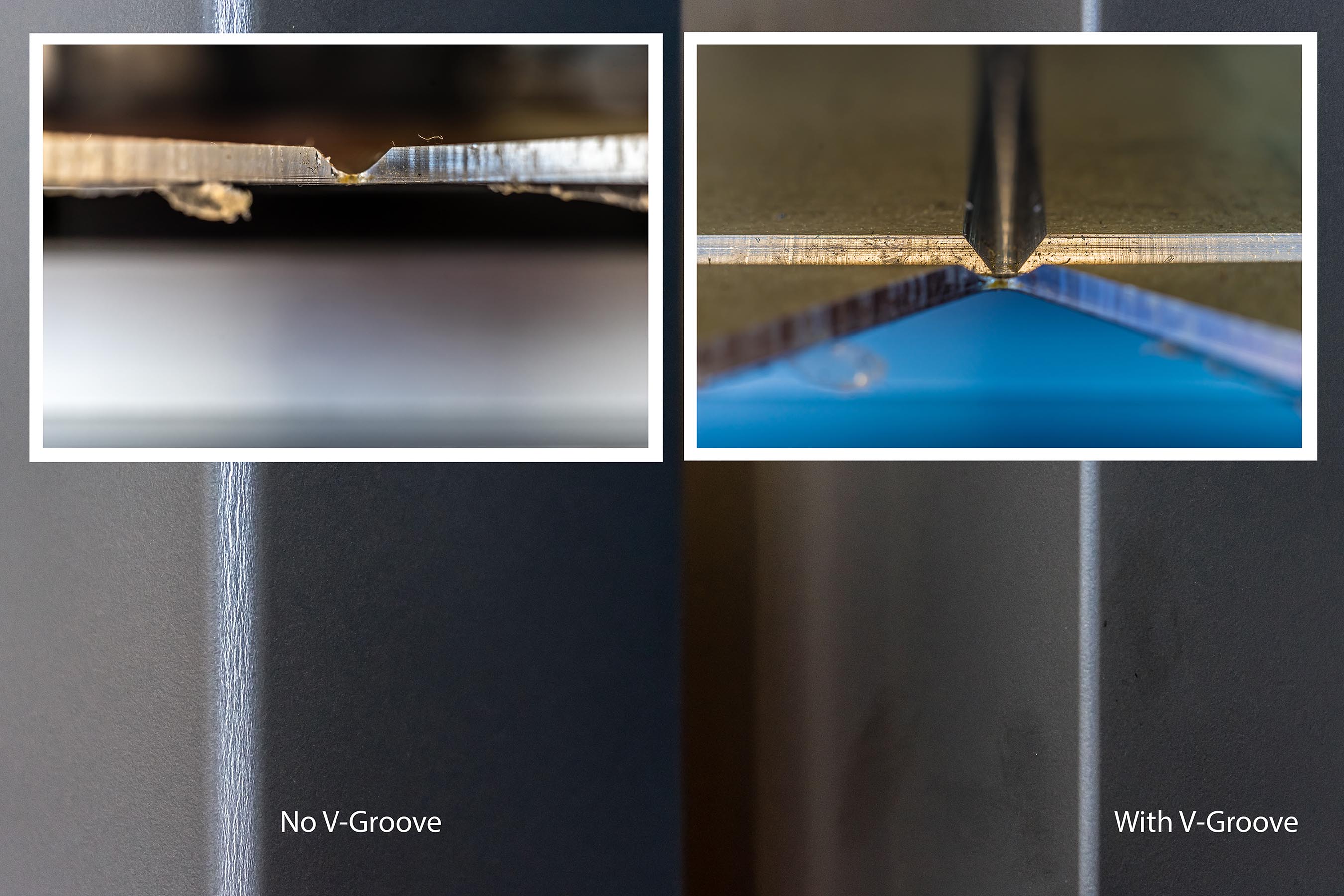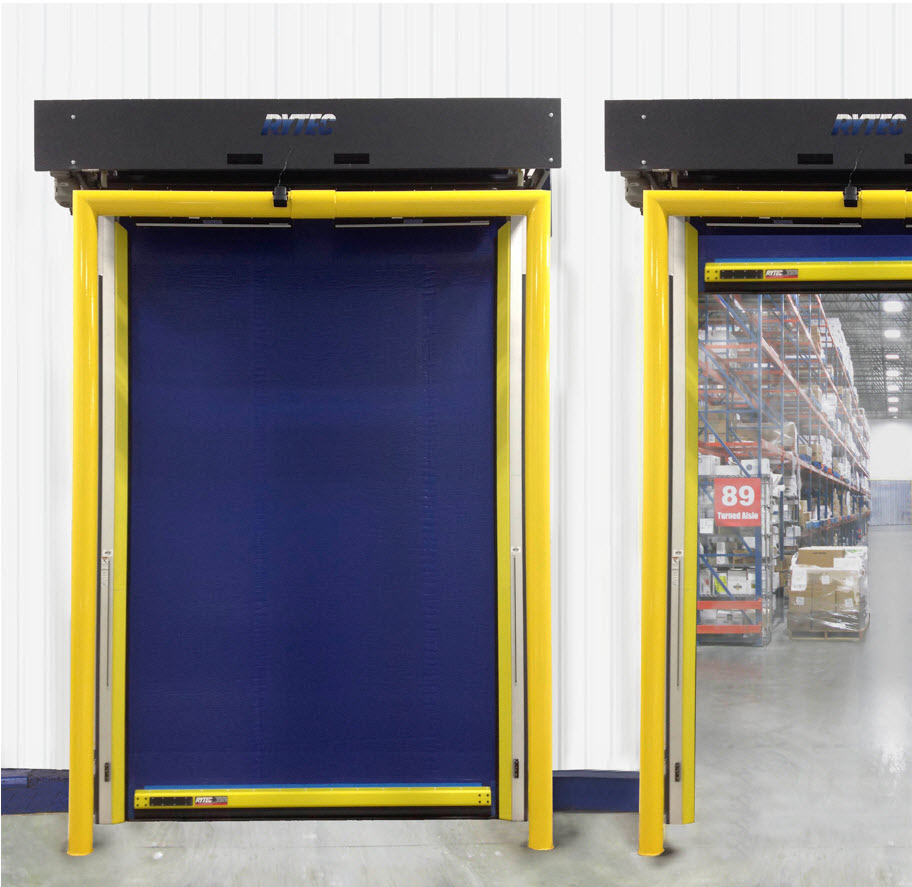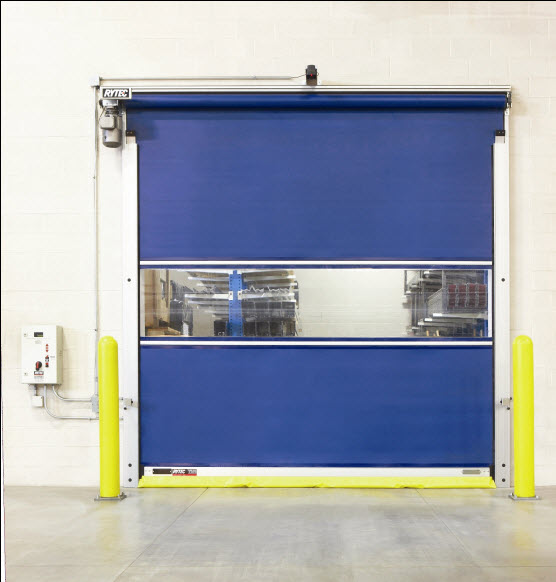Beyond gloss: Reassessing the concrete finish
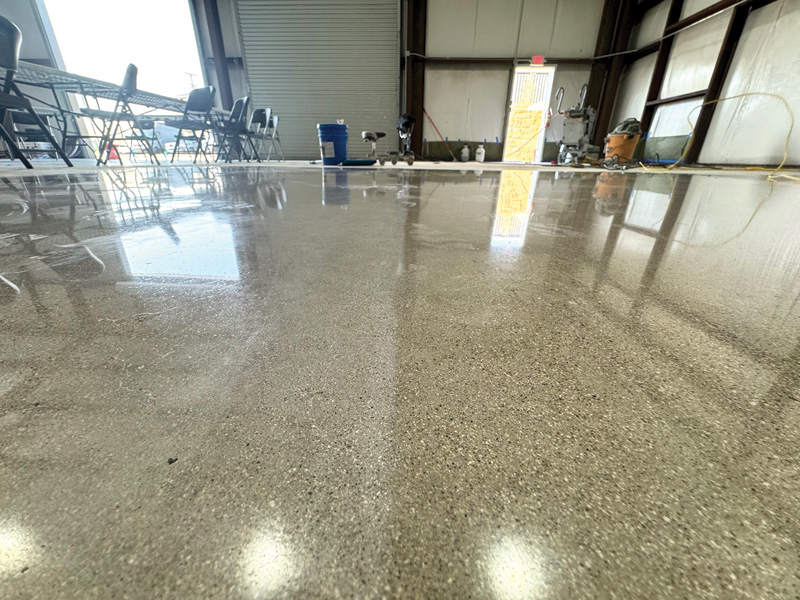
After years of grappling with client callbacks, legal disputes, and financial losses from poor polished concrete installations, the industry has reached a breaking point: prohibit polished concrete. The cycle of repeated failures can no longer continue, prompting the urgent question—what now?
Owners and design teams are not protected by today’s inadequate and vague polished concrete specifications. From floors failing before substantial completion to skyrocketing change orders for never-ending densifier applications to the billions lost through delayed schedules, legal disputes, and contingency hemorrhaging, enough is enough.
What was once promised as a durable, low-maintenance flooring solution has been replaced by a patchwork of temporary sealers, densifiers, and polyureas—products that often require reinstallation almost immediately after application. Despite calls for clarity in specification language with accurate descriptions of work results, the definition of polished concrete has broadened to accommodate any floor finish that produces a shine. The industry urgently needs a specification framework that is measurable, verifiable, and defensible.
Without a quantifiable specification to convey contract requirements, project teams will continue to be handed polished concrete floors that are ripe for change orders and expensive to maintain. Project teams will continue to lose money in contingencies, remobilizations, and lawsuits without understanding what went wrong and how to protect themselves in the future. Thus, there is a need for a new solution to achieve a more reliable result that exceeds expectations. Building on straightforward material testing and proven project successes, the industry is making significant strides toward developing accountable language and precise definitions that can be universally specified to address concrete floor challenges. The focus has shifted to demanding results—quantifiable, repeatable, and validated outcomes through physical testing of the finished product delivered to the client.
A new MasterFormat number and title—03 35 44 Refined Concrete Finishing—are being proposed to establish a clear and consistent language for a process that is fundamentally different from polished concrete. Unlike traditional polished concrete, refined concrete finishing represents a distinct approach with unique techniques and outcomes. This article will outline the key elements of the proposed specification, emphasizing how it improves upon and differs from existing sections related to polished concrete. It will also explore how conflicting terminology from suppliers has contributed to widespread misunderstandings within the industry.
The polished concrete problem
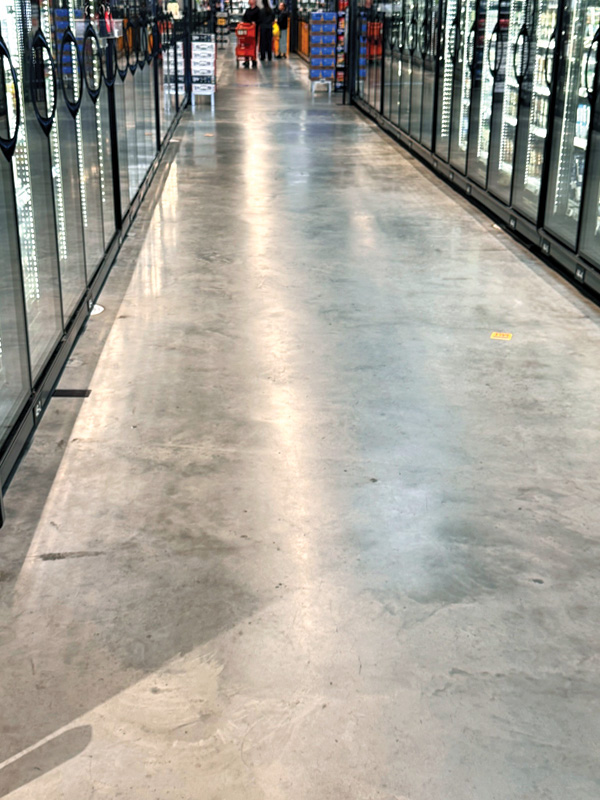
The design industry has struggled with polished concrete for years. Contradictory weak specification language has left owners and design teams to simplify their esthetic preferences based on photo representations and rely on marketing information about durability and low maintenance without proof. Inevitably, projects continue to have mixed results, where owners must accept problematic floors because they cannot be rejected contractually.
The language used to describe polished concrete lacks precision and clarity, making it difficult for owners to understand what they are purchasing, tough for designers to specify, and unclear for contractors to understand what they are required to build. Terms such as “high gloss,” “reflective,” “sustainable,” and “durable” can be highly subjective and used differently by manufacturers. This ambiguity can lead to misinformed choices based on marketing rather than factual performance characteristics. One of the authors recalls a client who opted for an alternative product advertised as a “polished finish,” only to face premature surface wear and higher-than-expected maintenance expenses. The root of the problem was a product substitution made without referring to the original specifications or fully grasping the limitations of the replacement. Although the Distinctness of Image (DOI) gloss—an ASTM-based metric widely used in North American projects, including in Canada, though not formally referenced in the National Building Code of Canada (NBC)—showed identical values between the specified and substituted coatings, this technical similarity inadvertently validated the unauthorized change, undermining the intended design. Consequently, the design firm was left responsible for a seven-figure cost to the owner. Unfortunately, this is far from a rare occurrence, and this example is not an isolated case, but sadly, it is one of many similar instances that design teams face.
The categorization of polished concrete into various levels of sheen can confuse even veteran professionals, as the criteria are broad, and producer results can vary widely. The Concrete Polishing Council (CPC) provides four appearance levels using DOI gloss with Level 1: flat, Level 2: satin, Level 3: polished, and Level 4: highly polished with gloss and reflectivity as the measurement guideline. These levels, from CPC’s Exposed/Polished Concrete Exposure Chart, are defined by image distinction, gloss value, and haze—characteristics based on reflection and lighting, not actual physical characteristics of the concrete.
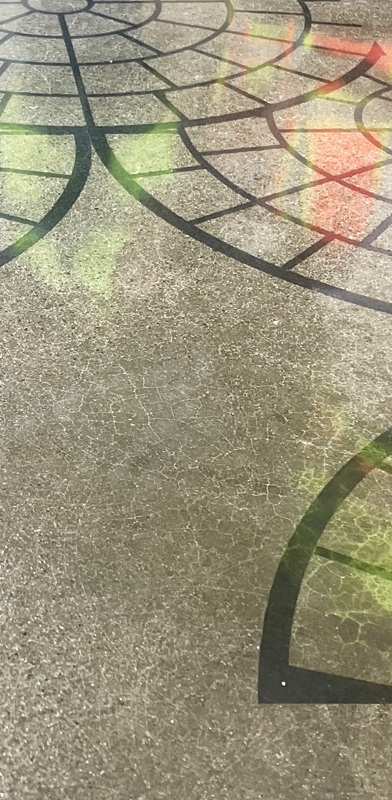
There are countless floor finishes (e.g. grind and seals, burnished polish concrete, etc.) and many ways to achieve gloss levels. When the path to the work result is only gloss, contractors will seek out the most economical way to fit the definition of polished concrete and meet the required distinctness of image gloss (DOI) level. Despite the design team’s best efforts in using the specification guidelines provided by manufacturers, results often disappoint. Sometimes, that same spec language is used to defend the undesired outcome—rather than serving their intended purpose to ensure the desired quality results for the owner.
What is polished concrete, exactly?
According to CPC, polished concrete is “the act of changing a concrete floor surface, with or without aggregate exposure, to achieve a specified level of finished gloss.” The definition further states there are different types of polished concrete: “Bonded Abrasive Polished Concrete, Burnished Polished Concrete, or Hybrid Polished Concrete.”
CPC defines bonded abrasive polished concrete as “the multi-step operation of mechanically grinding, honing, and polishing a concrete floor surface with bonded abrasives to cut a concrete floor… to achieve a specified level of CPC-defined finished gloss.” Burnished polished concrete is defined by CPC as “the multi-step operation of mechanical friction-rubbing a concrete floor surface with or without waxes or resins to achieve a specified level of CPC defined finished gloss.” By definition, the burnished version of polished concrete can include coating the floor with waxes and resins. The CPC notes that this “yields a less durable finish and requires more maintenance than bonded abrasive polished concrete.”
Hybrid polished concrete combines burnished polished concrete, bonded abrasive concrete, or anything that attempts “to achieve the specified level of CPC-defined finished gloss.”

The emphasis on shine
This emphasis on achieving gloss (specular gloss, DOI gloss, etc.) has led to practices prioritizing esthetic qualities over functional durability. The pursuit of shine in polished concrete usually involves the use of chemical sealers, sometimes called “guards,” latex, acrylic, and various grouts, as well as solid epoxy tooling, which coats the floor as it is superheated and resin is transferred via friction rubbing to fill and hide scratches and imperfections with a thin shiny coating rather than correct the concrete surface. Whether a floor is refined without topical treatments or coated with resins and sealers, CPC classifies all these floor types as “polished concrete” if they achieve gloss—sometimes.
The glossary page of the CPC includes a definition for surface-coated concrete, indicating that “surface-coated concrete (waxes and resins) does not conform to the definition of polished concrete. It is the operation of applying a film-forming coating to a concrete floor surface to achieve a specified level of finished gloss.” In other words, the defined result of surface-coated concrete is essentially the same as burnished polished concrete. By definition, both aim to achieve a level of gloss. This means substitutions involving any cheap grind and seal or temporary burnished film-forming material contractually meet the design intent—despite not meeting the design intent. How can a specifier reject a work result that is both allowed and not allowed?

While concrete is inherently durable, an overly aggressive dry polishing process often compromises the material’s integrity by destroying the finished slab’s most durable top “skin,” making it more susceptible to staining, scratching, and general wear. This degradation necessitates an initial grout coat and more frequent lifecycle refinishing and maintenance, contradicting initial claims of a problem-free floor. Thus, while the polished surface may initially appear appealing and shiny, its long-term viability (compounded by frequent coating applications) is questionable. Paul Gerber, CSC, CSI, SCIP states, “The current language does not eliminate potential conflict around subjective interpretations of design intent and what the subcontractor delivers. We have to do more than grit and gloss levels and measure the refinement of the surface itself.”
Concrete refining
The refining process is guided by initial measurements of average roughness (Ra) and Mohs hardness readings, which will be discussed in detail shortly. Refining includes wet mechanical refinement with power trowels or grinding equipment and chemical components that react with cement particles and free lime to stabilize and reshape the surface. Cement binds to form concrete. The unhydrated cement in the concrete tailings gets reincorporated to strengthen the surface concrete, and the newly exposed cementitious content has the opportunity to hydrate and strengthen the surface while it is in a malleable state, reworked back into itself and then refined to provide an improved denser surface. Many professionals may be unaware that the top surface of a concrete slab can be reworked and refined after initial hardening, making refined concrete appropriate for a slab that is 40 years old or brand new. The number of refinement steps will be based on many factors, not least of which are the initial Ra of the surface and the target Ra.
The top 19 to 25 mm (0.75 to 1 in.) of a concrete slab is most susceptible to physical damage and the effects of nature. Decreased moisture content (MC) and lowered relative humidity (RH) from poor external curing practices also impact the durability of the top layer. This can significantly reduce the surface strength of concrete when the humidity drops below 80 per cent as the hydration of the cement particles nearly stops below this level and does not restart when RH increases. The concrete refining process provides immense value and redefines the finishing and maintenance processes to help answer many of these issues.
A refined slab exhibits the same esthetic capabilities as polished concrete (aggregate exposure levels, colour, and DOI gloss) without coatings, sealers, and resinous grouts common with polished concrete. The concrete becomes the grout during the refinement process, addressing pop-outs, cracks, and other
small voids. Refined concrete creates a measurable, monolithic floor slab with its surface integrity intact.
“Unlike polished concrete, which allows for clear coat sealers to mask surface imperfections, surface texture readings within refined concrete keep everyone on track and owners satisfied with results,” says Chris Bishop, president of the National Concrete Refinement Institute (NCRI).
Refining concrete eliminates topical impurities that have become standard with most “polished concrete” methodologies and results in more flexibility with the final finish, such as staining, dyeing, or even maintaining a truly refined concrete surface, but for much less money.
Refined concrete benchmarks
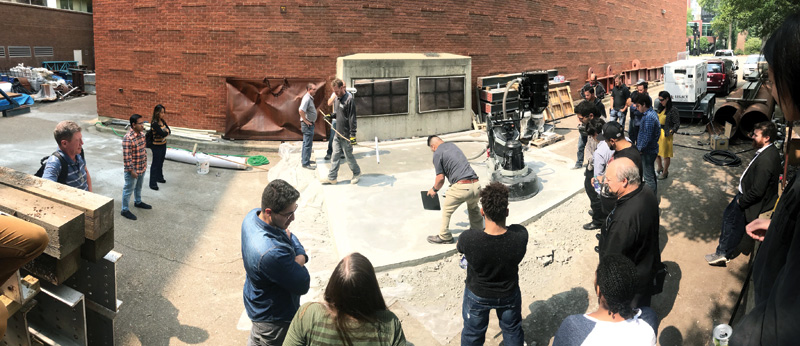
Physical readings from the concrete itself quantify performance benchmarks for refined concrete. Esthetic benchmarks from the coating industry (DOI gloss, lumen levels, etc.) can also be used. Still, physical benchmarks ensure resilience, durability, simple maintenance, and a long service life that owners associate with exposed concrete floors. The three most important physical benchmarks are average roughness (Ra), Mohs hardness, and dynamic coefficient of friction (DCOF).
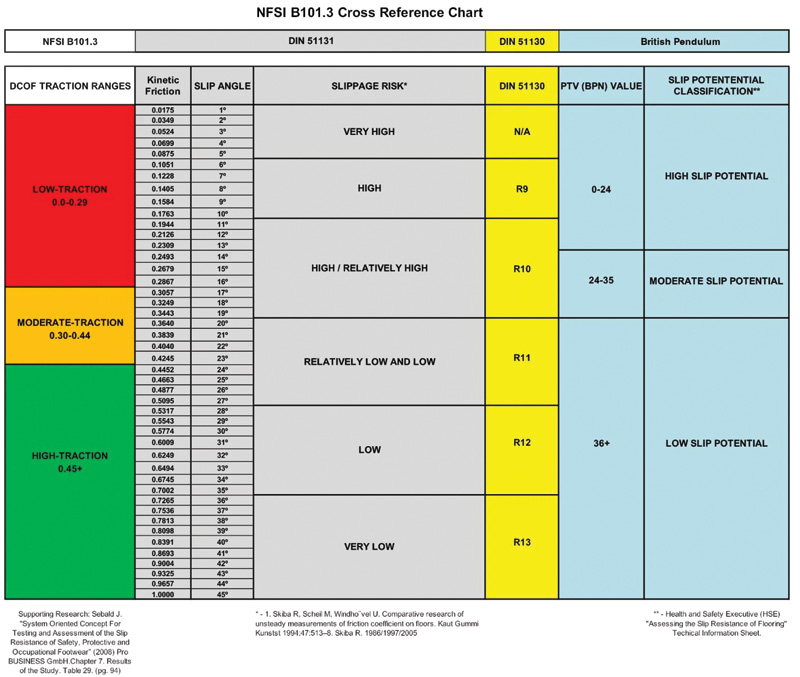
Average roughness (Ra)
These microsurface benchmarks for refined concrete are measured in microinches (μin) or micrometres (μm), typically in accordance with ASME B46.1-2019 (R2019), Standard for Surface Texture (Surface Roughness, Waviness, and Lay). Although this is an American standard, there is no codified standard in the National Building Code (NBC) for this application. In such cases, it is common practice to reference ASTM, ASME, or other internationally accepted standards when no code requirements or applicable Canadian standards exist.
Scott Langerman, P.E., of Langerman Engineering, says, “Measuring the roughness average (Ra) provides input for concrete surface refinement. The Ra test is performed with equipment (profilometers) that measure the roughness/smoothness of the micro-inch. Data are then used to determine steps for the initial grinding process, minimizing surface micro fractures and maximizing refinement. After refinement, the Ra test is performed again to determine that project specifications have
been achieved.”
Ra notes
- Ra is the numerical average of the total peaks and valleys across the length of a tested surface. It is also sometimes called the Centre Line Average (CLA).
- A minimum specification benchmark for placement and finishing new concrete should be 2.54μm (100μin) or less.
- Minimum Ra benchmarks for refined concrete may include (matte finish: 0.76μm [30μin] or less; Semigloss: 0.50μm [20μin] or less; Glossy: 0.254μm [10μin] or less). A tolerance of +/- 0.127μm [5μin] is acceptable in most cases.
- The NCRI educates architects and engineers and provides certification courses on surface measurement and refinement to installers.
Mohs
The Mohs test is a simple verification that can be performed on hardened concrete to help determine when the slab is ready to receive installation of a refined concrete finish and set minimum contractual benchmarks for the completed concrete surface. The ASTM standards referencing the Mohs hardness test are ASTM C1790-16 and ASTM C1895-20. While these standards are not referenced in the NBC or the CSA Group, they are used in Canadian practice to help establish surface hardness expectations and support performance-based specifications. These standards outline procedures for determining the hardness of a material using a scratch test, such as the Mohs hardness scale. While the Mohs test is a qualitative method originally devised in the early 19th century, these standards incorporate the Mohs principle and adapt it for specific industrial applications, including concrete and other materials used to design and defend a minimum expectation of abrasion resistance.
Mohs notes
- The Mohs scale ranks materials based on their ability to scratch softer materials.
- It is a comparative scale, ranging from 1 (talc) to 10 (diamond).
- ASTM C1790-16 and ASTM C1895-20 emphasize controlled testing procedures to ensure reliability and repeatability.
- A minimum specification benchmark for a refined floor can be safely set at 7Mohs.
- 7Mohs is roughly equivalent to quartz. Natural concrete can achieve up to 8 and 9Mohs.
Dynamic coefficient of friction (DCOF)
Some film-forming coatings, such as epoxy and acrylic systems, can achieve a high gloss when burnished, creating a refined look to the floor. However, they also create a surface film that poses challenges for maintaining adequate traction and, consequently, a higher coefficient of friction (COF). With slips, trips, and falls constituting a significant percentage of workplace injuries, including 67 per cent occurring on level surfaces, achieving and maintaining an appropriate COF is critical for user safety. DCOF is a measurement of the floor, similar to Ra and Mohs.
DCOF notes
- DCOF measures the resistance between two surfaces in relative motion.
- DCOF measures a surface already in motion, as opposed to the static coefficient of friction (SCOF), which measures resistance before motion begins (i.e. lawsuits and injuries from people slipping and falling are more directly related to DCOF, not static COF. People do not fall when standing still).
- The NFSI is a resource that provides training and third-party testing and actively supports standards such as B101.1, B101.3, and B101.4.
- ANSI B101.4 includes updated metrics for bare-foot travel on hard surfaces.
While CSA B651, Accessible design for the built environment, and the National Building Code (NBC) both reference the need for slip resistance in various applications, they do not reference a specific standard for measuring it. In most cases in Canada, the ANSI/NFSI standards referenced above are also used in specifications for measuring slip-resistance.
Final set
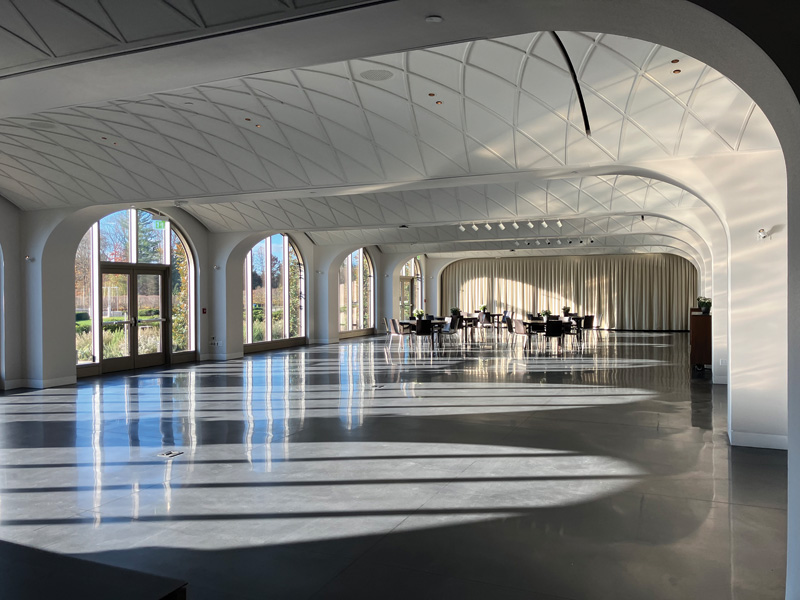
While polished concrete can offer certain esthetic and practical advantages, focusing on surface gloss or shine rather than lasting durability compromises the result. The impacts of outdated topical treatments and resinous tooling used in current polishing practices, coupled with the lack of clear definitions and standards, present significant challenges for design teams and contractors. Clarity is power, but the confusing language surrounding polished concrete continues to breed errors, change orders, and deep frustration.
As the construction industry progresses, it is essential to emphasize transparency, precision, and authentic quality in flooring solutions, moving away from materials and methods that favour short-term esthetics and financial gain over long-lasting performance and value.
Paul Gerber says, “Specifying performance criteria such as Roughness Average (Ra), Surface Texture Grade (STG), concrete hardness measured on the Mohs scale and Dynamic Coefficient of Friction (DCOF) in the contract documents ensures that my clients have measurable and defined qualities that ensure a durable and sustainable exposed concrete floor finish as the starting point.”
These measures move beyond the confusion surrounding polished concrete and set new standards by introducing “refined concrete” as a long-overdue solution. Measuring light reflected off a floor is not the same as assessing the quality and performance of the floor itself.
Physical benchmarks addressing the performance of the concrete must more effectively anchor the design intent to deliver truly durable and sustainable finished concrete floors. Section 03 35 44–Refined Concrete Finishing is a step toward a more “concrete” exposed finish outcome. The next time a client considers a polished concrete floor, look closer at their expectations. Suppose their vision extends beyond mere shine to include durability, sustainability, and a maintenance schedule that avoids decades of reliance on petrochemical veneers. In that case, they may actually be looking for refined concrete.
Resources
- To explore the relationship between friction coefficient and surface roughness of stone and ceramic floors, refer to this detailed study on ResearchGate.
- For insights into communicating effectively with project teams and redefining concrete language, visit Construction Canada’s article.
- To learn more about the ANSI/NFSI B101.2-2012 standard for walking surface safety, check out this comprehensive overview on the ANSI Webstore.
- Explore the National Concrete Refinement Institute’s (NCRI) website, theNCRI.com, for information on advancing concrete refinement practices.
- To ensure safe walking surfaces on exposed concrete, consider reading this article from The Construction Specifier.
- For a discussion on polished concrete that goes beyond esthetics, delve into this feature in The Construction Specifier.
- To clarify terminology related to concrete polishing, consult the American Society of Concrete Contractors’ (ASCC) glossary of terms.
Authors’ note: The authors extend their gratitude to Sherry Harbaugh, John Guill, Rae Taylor, Paul Gerber, Alma Jauregui, Brian Heather, Mitch Miller, Michael Thrailkill, Thomas Robinson, Toru Narita, Matt Ferguson, Cynthia Belisle, Daniel Hargreaves, Don Koppy, Anne Kimpton, Jennie Perlmutter, Doug Robertson, Jim Wilson, Michael Zhao, Norm Doergess, Gloria Barrera, Kevin Hafer, Luis Adan, Anne Whitacre, Peter Roy, Bill Nelson, Jeff Halashewski, Paul Wong, and many others. Their shared stories, unique perspectives, and invaluable contributions have significantly shaped the journey that led to this point.
Authors
Kristina Abrams, AIA, iSCS, LEED AP, CDT, CCS, is an architect with more than 20 years of experience collaborating with design teams nationwide. As director of specifications at O’Connell Robertson, she focuses on establishing clear project terminology early in design to strengthen communication and improve contract documents. Abrams is passionate about bridging the gap between drawing and specification intent and design intent.
Chris Bennett, CSC, iSCS, CDT, is a concrete consultant in Portland, Ore. He has trained thousands of architects, engineers, and contractors to produce better results and reduce risk in concrete. Along with Keith Robinson, he will present this year at Construction Specifications Canada’s (CSC) “Rock that Spec” national conference in St Johns, Nlfd.
Bill DuBois, AIA, CSI, CCS, is an architect passionate about working with the entire construction project team, including owners, designers, constructors, and suppliers. DuBois strives to improve the decision-making processes for efficiently implementing powerful design solutions and creating construction specifications to reduce risk and maximize value. In June of this year, DuBois will present on the subject of refined concrete at the National Specifications Consultants in Independent Practice (SCIP) conference in Louisville, Ky.
Melody Fontenot, AIA, CSI, CCCA, CCS, iSCS, SCIP, is a senior specification writer with Conspectus Inc., based in Portland, Ore. A licensed architect with more than 20 years of experience, she specializes in project management, construction documents, and contract administration. Passionate about product research and spec knowledge, she strives to improve communication across the architecture, engineering, construction, and owner (AECO) industry.
Kathryn Marek, AIA, CSI, CCCA, NCARB, SCIP, is a specifier and an architect. She is the principal at KM Architectural Consulting and the current president
of SCIP.
Keith Robinson, RSW, FCSC, FCSI, is an architectural technologist and specifier in Edmonton, Alta. He also instructs courses for the University of Alberta, advises several construction groups, and sits on many standards review committees for ASTM and the National Fire Protection Association (NFPA). Along with Chris Bennett, he will present this year at Construction Specifications Canada’s (CSC) “Rock that Spec” national conference in St Johns, Nlfd.
Ryan Stoltz, P.E., iSCS, LEED AP, is a licensed structural engineer, LEED accredited professional, and associate principal at Structures, a North American engineering firm in Austin, Texas.
Vivian Volz, AIA, CSI, LEED AP, SCIP, is an independent specifier for commercial, public, and multifamily projects in California and beyond. Volz has been
a local and national Construction Specifications Institute (CSI) leader
and is SCIP’s immediate past president.

